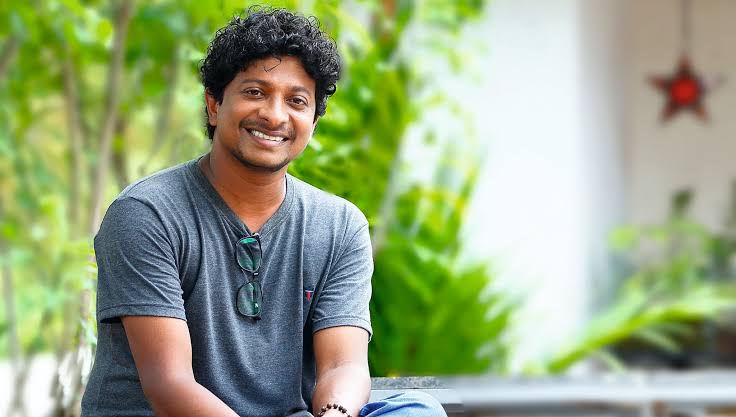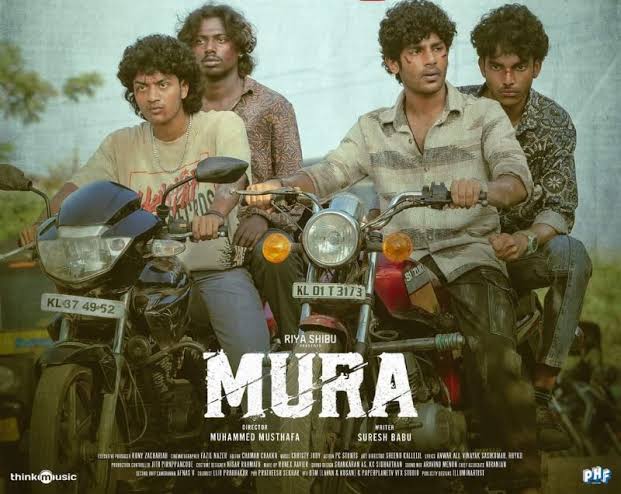Thenjipalam, KERALA :

Muhammad Musthafa is an award-winning director and actor who predominantly works in the Malayalam film industry.
Muhammad Musthafa is an award-winning director and actor who predominantly works in the Malayalam film industry. The critically acclaimed actor-turned-filmmaker made his directorial debut with the 2020 film Kappela. The film earned Anna Ben the Best Actress Award and Musthafa the Best Debut Director Award, respectively, at the 51st Kerala State Film Awards. Additionally, its production design by Anees Nadodi was honored at the 68th National Film Awards. Musthafa also won a special mention for his performance in the film Ain at the 62nd National Film Awards.
Musthafa’s second movie, Mura, with all its tropes of a gangster drama — revenge, high-end action, and bloodshed — is running in theatres now. The film features Suraj Venjaramoodu and All We Imagine As Light-fame Hridhu Haroon in the lead roles. Mura also stars Maala Parvathi, Kani Kusruti, Kannan Nayar, among others.
Musthafa talks to Maktoob’s Nikita Ramanarayanan:
Nikita Ramanarayanan: Mura takes a raw, intense portrayal of violence and revenge, marking a shift from the subtle suspense and drama in your debut work Kappela. What inspired this gritty new direction?
Muhammad Musthafa: After Kappela, I wanted to explore something more visceral and intense. The scriptwriter and I had been discussing various subjects, and ultimately, we felt most drawn to a story rooted in the raw realities he had witnessed in his hometown. He brought with him a wealth of experiences and observations from his own community events and stories he had seen or heard, each carrying an edge of realism and grit.
By weaving these together, we shaped a story that felt grounded yet powerful. This approach not only only allowed us to create a narrative that is genuine and impactful, but also gave us the opportunity to work with new talent.
Nikita: Mura features elements of Trivandrum’s local culture, especially in its use of dialect and slang. Could you share how you approached the cultural aspect of the film and why it was important to root the tale in Trivandrum?
Musthafa: Our screenwriter, who is from Trivandrum, drew heavily from his own observations of the city. The culture, stories, dialect, colloquial slang, and mannerisms of the people he grew up around naturally influenced the story’s setting and language, adding a layer of authenticity that we aimed to preserve, resulting in a narrative that feels raw and relatable.
However, while the essence of Trivandrum is embedded in the film, we wanted to creatively craft a story that could resonate with it. By setting Mura in Trivandrum, we were able to showcase a side of the city that often goes unseen, using the dialect and local flavor to bring a distinct realism to the characters and story.
To further root the film in Trivandrum’s culture, we chose actors with ties to the location. We held auditions there to find emerging talent who could bring the local nuances to life. Also we were fortunate to have talented actors like Hridhu, Suraj, and Mala Parvathy, who also share ties with Trivandrum. Their performances brought depth to the characters, helping us capture the city’s spirit in a genuine way.

Nikita: You brought in new talents for this film. The friendship between the four main characters is central to the plot, how did you approach directing this group dynamic?
Musthafa: Working with fresh talent was a rewarding experience, and I was genuinely impressed by how quickly they adapted to the demands of their roles. Although most of them were newcomers, they didn’t let that hold them back. To build their confidence and help them develop a natural rapport, we organized a 10 day workshop before filming. This preparation was essential for addressing any initial camera fear, allowing them to fully embrace their characters and form a close bond as a group.
Hridhu, the only one with prior film experience, played a key role in this process. We brought him into the workshop, so he could help guide and support the others, allowing them to feel more comfortable in front of the camera. His presence was a big boost to their confidence, and it set the tone for the group dynamic we wanted to achieve. Suraj also visited the workshop to interact with the cast and share his insights.
By the time we started, the actors had developed a beautiful camaraderie that felt genuine and natural on screen. Their friendship became the heart of the film, adding depth to the story. Despite being new to acting, they brought a raw, candid energy to their roles.
Nikita: The film incorporates powerful visual motifs that enhance the storytelling and highlight the film’s deeper themes. Could you talk about the visual choices and how they contribute to the overall mood of the story?
Musthafa: The pre production phase was absolutely key in developing the visual motifs that shape Mura. We dedicated significant time to brainstorming and experimenting with visuals that could subtly convey the film’s deeper themes and emotional tone.
There was a strong sense of dedication across the team, with everyone committed to making the film as visually and emotionally compelling as possible. By the time filming began, the visual motifs had become an essential storytelling tool, allowing us to communicate the film’s underlying themes.
Nikita: character of Ani, portrayed by Suraj Venjaramoodu, acts as a mentor figure for the younger men in Mura. And why did you choose to place Rema Devi, a female character, as his superior in the power hierarchy?
Musthafa: When the scriptwriter first shared the story, Rema Devi’s character already stood out as a strong, commanding presence. Her role was envisioned with a sense of dominance and authority. In many recent cases, there’s often a significant, sometimes unexpected, influence of women in positions of power or control.We wanted to reflect this complexity.
Rema’s position not only adds depth to the narrative but also challenges typical power structures. Her authority brings a new layer to the story. Ani, a seasoned figure himself, respects and even defers to Rema’s judgment, reflecting her formidable influence.
In developing Rema’s character, we aimed to craft a figure who could embody both strength and a touch of mystery, someone whose actions and decisions are respected, even if they may seem unconventional. Audiences have started taking notice of Rema, which is encouraging.
source: http://www.maktoobmedia.com / MaktoobMedia.com / Home> Film & TV / by Nikita Ramanarayanan / November 17th, 2024








